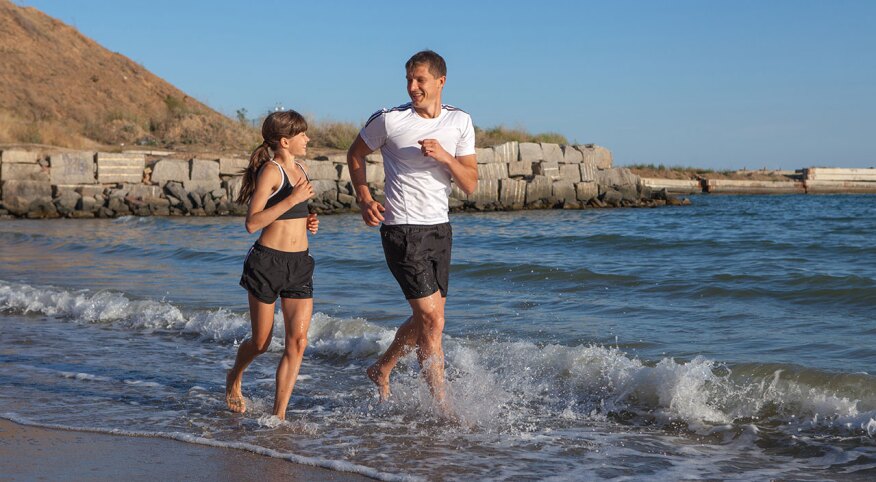I lost a footrace to a 7-year-old.
The race took place at a playground. I’d just picked up my daughter from school, and she was running around the jungle gym with her friends.
“Race Rowan!” she shouted at me, pointing to a boy in her class.
Rowan got the jump on me at “Go!” And then I couldn’t get past him on the narrow, 100-yard-long asphalt path. Maybe if the path had been wider or we’d raced a mile, or I wasn’t 55.
I became a father late in life. I had my first kid at age 48 and my third (and likely last) just a year ago. When my grandfather was in his 50s, he spent all his time reading spy novels, drinking away his Navy pension. I’m sprinting around a playground with little kids.
I prefer to think of it as a second athletic life. It may not be as intense as the first, but I can’t subside into an easy chair while my 7-year-old daughter is doing cartwheels across the living room.
How do I stay in the game? By following these three simple rules:
Be their role model, not their competitor
As a man past his athletic prime, I realize my experience of fatherhood is going to be different from what I’ve seen in movies and in my own life. I’m not going to be the Great Santini, pounding a basketball against my teenage son’s head, demanding another game of one-on-one. Nor will I be my own father, who beat me in a half marathon when I was in high school.
But I can be their example. Research has found that dads who exercise regularly have kids with better fitness habits and overall metabolic health. If I don’t get my butt off the couch and move, neither will they. So anytime I catch myself thinking, I’m too tired; I should sit this one out, I consider my kids.
It doesn’t matter how tired my legs feel, I’ll get up if it’s for the kids.
Take a break, because it isn’t a defeat
“When I was 27 or 30, I was running 130 miles a week,” says Bill Rodgers, a winner of four Boston Marathons and four New York City Marathons. When he hit his 40s he didn’t stop running, even as he felt the effects of wear and tear.
Instead, he followed fellow Olympian Jeff Galloway’s Run-Walk-Run method, which suggests that athletes take regular walking breaks. “Sometimes,” he told me, “I wanted to sit down on a park bench and watch the boats go by.”There’s no shame in that. Taking a break when you’re out on the ball field with your kids or leading them on a hike is a vastly different thing from never leaving your house.
I told my father about the Run-Walk-Run method. He tried it and discovered that he moved faster and felt better if he allowed himself more breaks. At age 80, he’s still out there.
Play the long game
My youngest daughter won’t graduate from high school until I’m 72. If I want to be around for that, I need to take care of my body. The trick is finding the middle ground between staying active today and avoiding an injury serious enough to bench me for good.
Stretching is a big part of that. I was stretching when I was a young runner, but it’s especially important now. I went bowling last month and pulled a muscle in my butt. My butt! So I stretch before anything active, not just to prevent injury but also to improve blood flow and increase my life span in general.
My goal isn’t to be the faster guy on the playground — it’s to maintain what I’ve got, as I have big plans for the future. Someday I want to take all my kids on a five-day hike across Isle Royale, a remote national park in Lake Superior.
That might not happen for another 20 years. But when it does, I have no intention of sitting that trip out.

Shutterstock
Follow Article Topics: Health-&-Fitness





